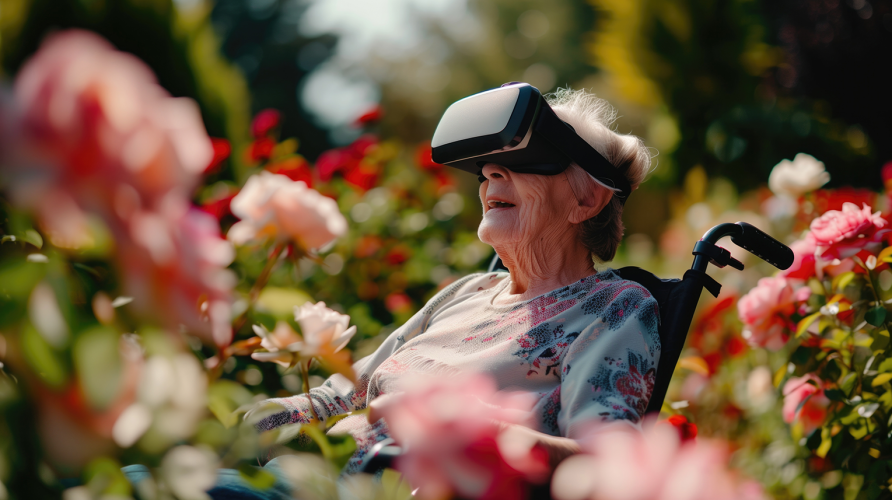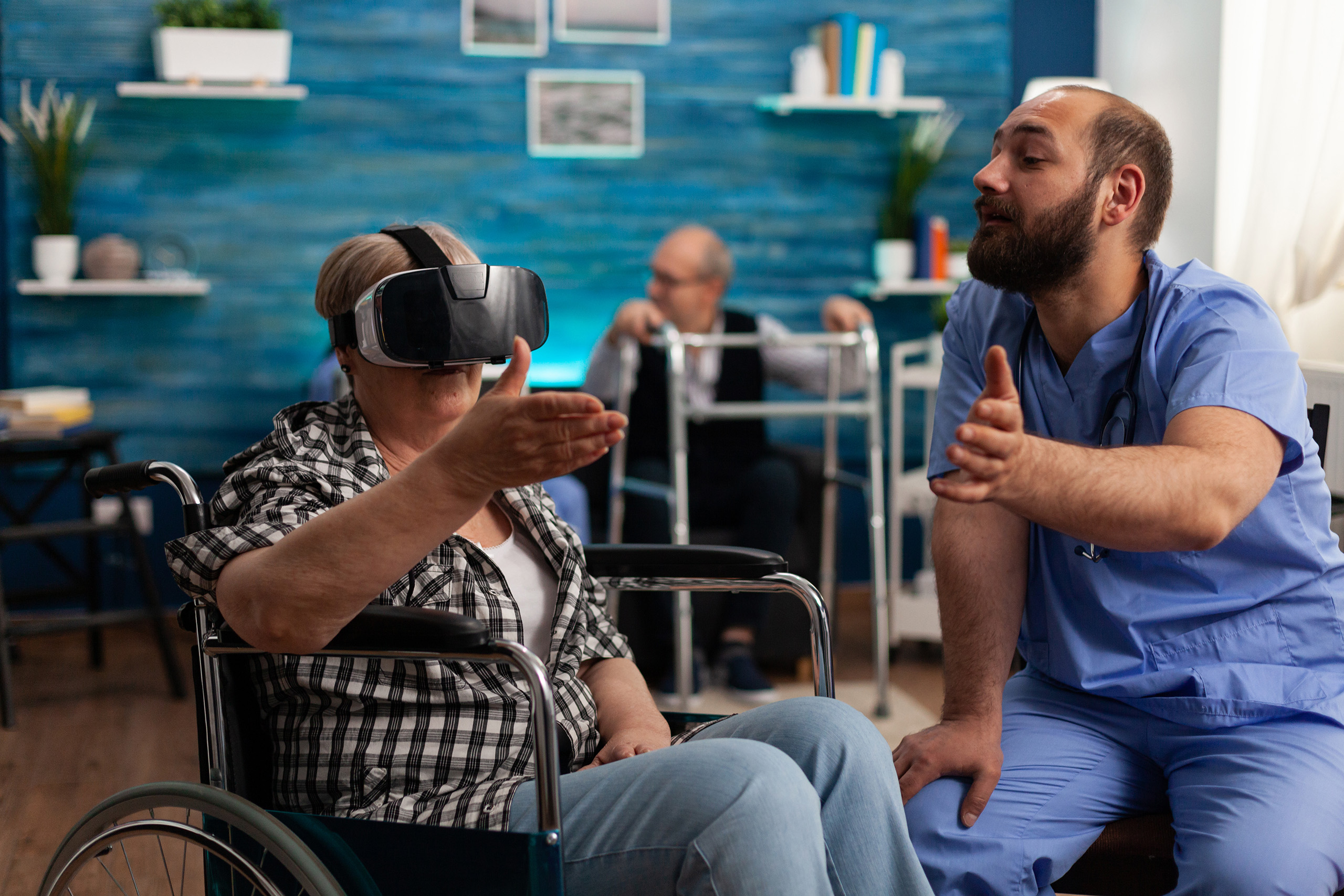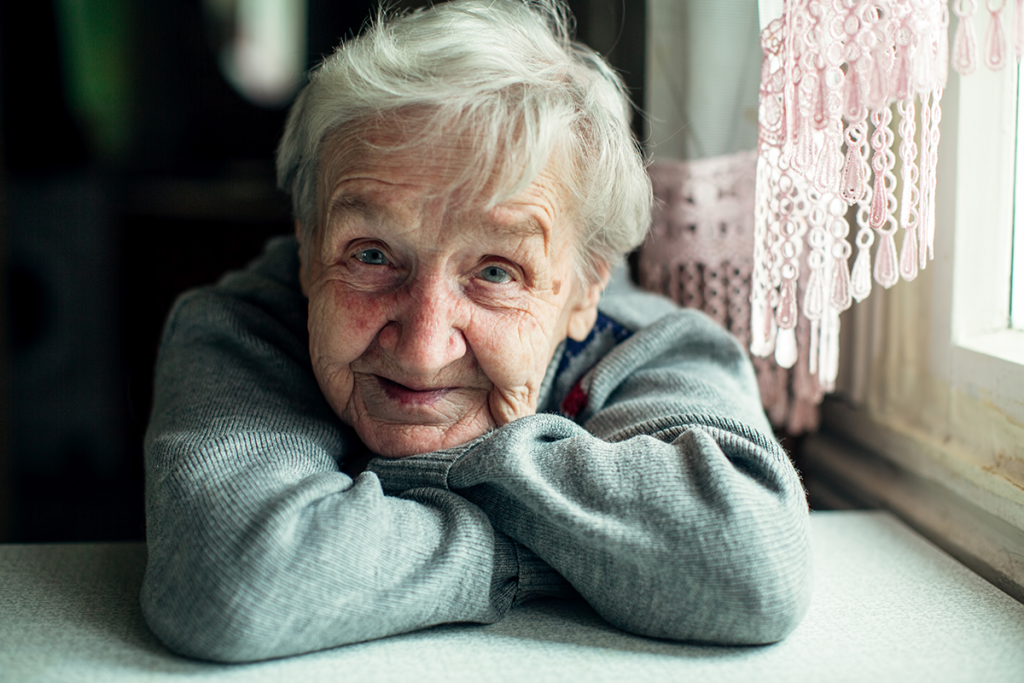VITAR experiences & applications
Switch on & immerse
360-degree virtual reality environments offer a deep immersion that completely isolates the user from the outside world. The use of VR glasses leads to a strong sense of presence during use, resulting in quick and long-lasting relaxation and an increase in mental energy.
The experience of actually being in a different place is immediately noticeable. This allows the human brain to let go more quickly and clear its head, resulting in deeper and more lasting relaxation. Instead of just watching a movie about a wildlife park, users are directly involved in the scene and stand right in front of the animals.
Adopt a comfortable & safe sitting position
Adopt a safe and comfortable sitting position.
Switch on VR glasses
The "On button" is located at the top right of the VR glasses. Press this for 3 seconds.
Put on VR glasses
Put on the VR glasses. The Velcro straps allow quick and easy adjustment to the head size for a secure fit.
Selection of the experience using eye tracking
You are directly in the selection menu. Focus your eyes on an experience that you would like to see and it will start automatically.
Enjoy the experience
Sit back, relax and enjoy your journey into other worlds. Move your head to discover the diversity!
Applications for every mood
Treat yourself to a short virtual break at the touch of a button: virtual reality (VR) is the only technology that allows you to immerse yourself directly in relaxing and calming worlds. Explore new environments and expand your horizons.

Fragrance experiences
The combination of VR with essential oils offers a very special experience. Stroll through the lavender fields in France, smell the wonderful scent of the fields and experience pure relaxation.

VITAR Travel
Relax in the VR nature video area with 360-degree films in 3D - accompanied by binaural music perfectly matched to the applications.

Meditations & fantasy journeys
In the area of meditations and fantasy journeys, guided breathing and meditation exercises, storytelling and sleep aids with a soothing voice help to achieve a state of deep relaxation.

Interactive applications
Interactive applications and mental training sessions that are particularly effective due to the complete shielding provided by the VR glasses.
Specially developed content
The VR videos and interactive applications from VITAR are optimally designed for mobile VR systems. This content is available in high quality resolution and offers a unique experience that creates an authentic 3D effect. This clearly stands out from conventional 360-degree videos and enables perfect immersion in relaxing worlds. In addition, a fixed camera position and a constantly superimposed floor minimize the risk of motion sickness and fear of heights.

Design individual content with myVITAR
Discover a whole new dimension of digital experience with myVITAR. myVITAR allows you to upload your own pictures via the user-friendly VITAR app and experience them in an impressive virtual reality (VR). Perfectly suited for users of all ages, myVITAR creates unique, shared experiences across generations.
The intuitive VITAR app makes it easy to upload photos and videos. Once uploaded, the content is automatically transferred to your VITAR VR glasses and can be viewed.
myVITAR offers a freely selectable quota of storage space for your special digital memories. Re-create family bonds by sharing memories with family members wherever they are. A great way to preserve and share experiences and stories across generations.
VR application for...
VR nature experiences offer numerous health benefits, including stress reduction and relaxation by activating the parasympathetic nervous system and lowering cortisol levels. They also serve as an effective distraction for pain management by immersing patients in another world, which is particularly helpful after surgery or for chronic pain. In addition, these experiences can improve mood and enhance well-being, which is particularly beneficial for long-term hospital stays. They also support physical and psychological rehabilitation by creating a motivating environment that encourages participation. Finally, VR technology enables individualized therapy approaches that can be tailored to patients' needs and preferences, increasing patient satisfaction and improving quality of life.
Virtual reality therapy (VR therapy) has proven to be an effective method of pain management and offers numerous benefits for pain patients. VR therapy can effectively distract patients from their pain by immersing them in a virtual environment that captures their attention and thus reduces the perception of pain. In addition, VR has a calming and pain-relieving effect through visual and sensory stimulation, reduces anxiety and stress, and encourages movement, which is particularly helpful in cases of pain-related lack of movement. The therapy also supports neuroplasticity by training the brain to process pain signals differently and allows for personalized, non-invasive treatment without the risks of drug side effects. Research confirms the effectiveness of VR in treating acute and chronic pain, making it a valuable addition to traditional therapies.
Breathing exercises with virtual reality (VR) offer multiple benefits for patients by improving physical, psychological and motivational aspects. VR creates calming environments that can promote relaxation and reduce stress and anxiety. The immersive properties of VR increase motivation and engagement for regular breathing exercises, which is particularly helpful for chronic pain patients or in the post-operative phase. VR allows for customization of therapy, improves breathing technique through visual and auditory cues and provides a safe, controlled environment for exercise. In addition, modern VR systems can provide biofeedback and monitor therapy progress, further increasing the effectiveness of breathing exercises and helping to promote mental health.
The use of virtual reality (VR) in medicine offers significant benefits for patients, both before, during and after surgery. In the pre-operative phase, VR can reduce anxiety and stress in patients through calming scenes and detailed visualizations of the upcoming procedure, improving their understanding and confidence in the process. Intraoperatively, VR can contribute to pain control by distracting patients and potentially reducing the need for anesthetics, while assisting surgeons with 3D visualizations, improving the precision and efficiency of surgery. Post-operatively, VR helps with pain management and supports physiotherapy rehabilitation by engaging patients in a virtual environment for exercises. Overall, VR improves not only the physical but also the emotional well-being of patients and helps to optimize the overall surgical experience.
The use of virtual reality (VR) as cognitive training for intensive care patients is an emerging field of research and application with the potential to significantly improve patient recovery and well-being. VR provides cognitive stimulation that helps maintain or improve memory, attention and problem-solving skills, and can reduce the incidence of delirium by keeping patients mentally active. VR also creates a calming environment that reduces stress and anxiety, which is particularly important in intensive care. Interactive VR scenarios promote positive emotions and can increase motivation to participate in rehabilitation activities, leading to improved physical and cognitive outcomes. Despite technical and financial challenges, the integration of VR into the treatment of intensive care patients offers promising opportunities to improve their health and quality of life.
Virtual reality (VR) combined with bedside yoga can significantly improve patient care. Due to the immersive nature of VR, patients who are physically restricted can virtually immerse themselves in a relaxing yoga environment. This not only promotes mental relaxation and reduces stress and anxiety, but can also help to alleviate pain and discomfort. The visual and auditory elements of VR yoga sessions help patients to focus on movements and breathing techniques, making it easier to perform yoga exercises in bed. In addition, this technology supports physical rehabilitation and promotes mobility by providing targeted exercises adapted to the patient's needs.
Virtual Reality (VR) offers significant benefits for gamified training and memory work through its immersive nature. By creating engaging virtual worlds, VR can increase user concentration and motivation, which improves learning and memory formation. For memory work in particular, VR offers the opportunity to vividly depict past experiences or places, which contributes to cognitive stimulation, especially for older people or those with cognitive impairments. VR games can be specifically designed to train cognitive skills such as attention, problem solving and memory. In addition, the technology enables customized experiences tailored to the specific needs and abilities of users, which increases the effectiveness of the training.
Virtual reality (VR) can have a significant positive impact on the activation and performance of movement exercises at the bedside. By creating an immersive and motivating environment, VR can activate patients mentally and physically, even if their mobility is limited. This not only helps to gently stimulate muscles and promote blood circulation, but also helps to prevent complications such as muscle atrophy and thrombosis. VR also enables personalized exercise programs that are adapted to the individual abilities and needs of patients, making exercises safer and more effective. The playful component of VR applications can also benefit patients psychologically, as they experience entertainment and variety, which improves their overall quality of life and recovery.
Virtual reality (VR) can make an impressive contribution to biographical memory by vividly reconstructing past environments and experiences. This technology allows users to virtually "visit" places of their youth or important life events, which can be particularly valuable for people with dementia. The immersive representation can strengthen emotional and cognitive connections and revive memories that were thought to be lost. VR supports memory by providing sensory stimuli that activate memories of specific events or phases in the user's life. The technology also encourages conversation and interaction with caregivers or family members, which improves social integration and emotional well-being.

Interested?
Use the relaxation in fantastic natural worlds with special binaural audio frequencies, dream images and mediations for mental regeneration.